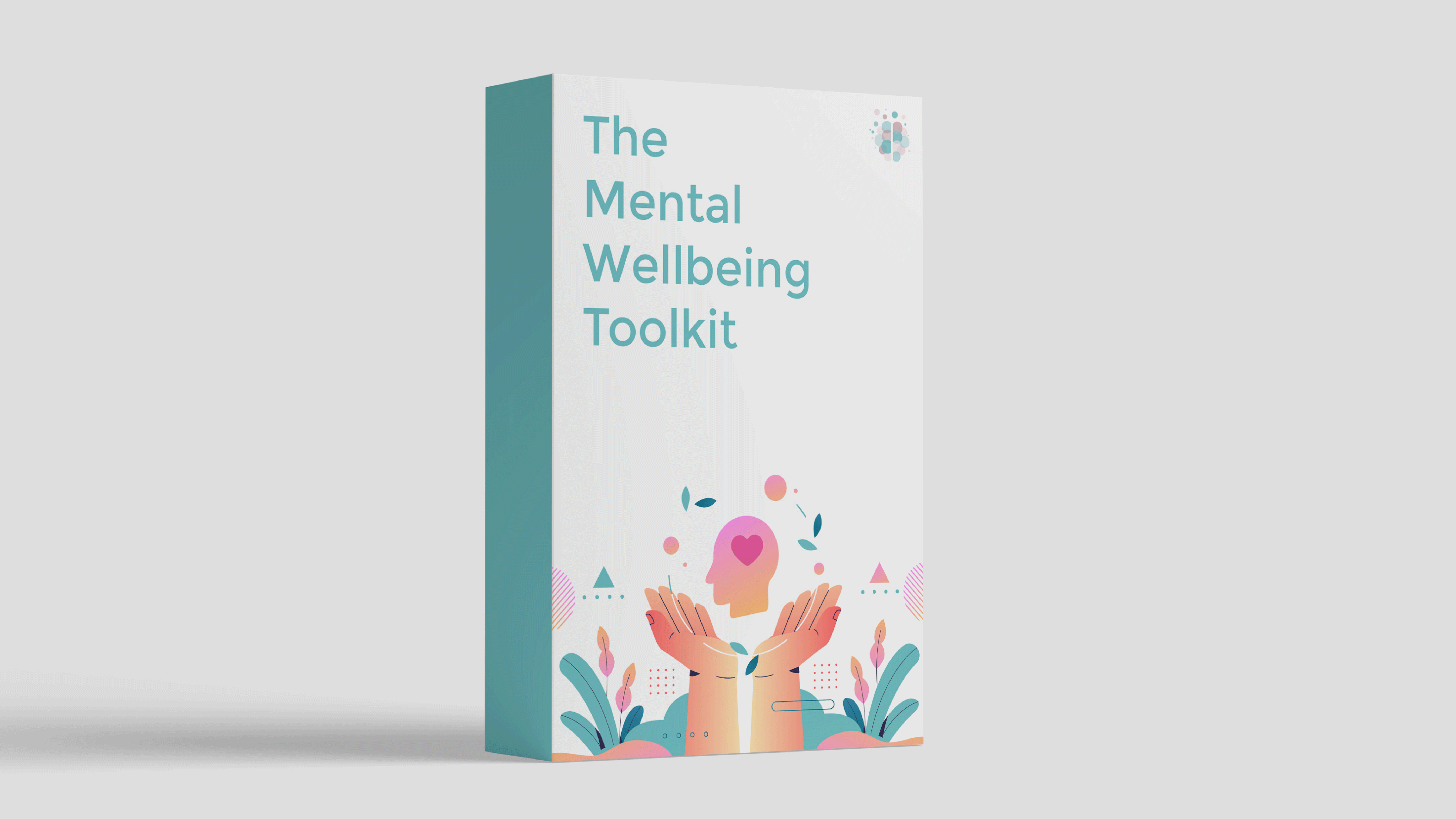Dialectical Behavioural Therapy (DBT) was created by acclaimed therapist Marsha Linehan.
During adolescence, Linehan experienced severe emotional dysregulation, including suicidal ideation and self-harm. Her lived experience of mental health issues influenced the development of DBT, now widely recognised as an effective form of psychotherapy.
- Mindfulness
- Emotion Regulation
- Interpersonal Effectiveness
- Distress Tolerance
The Distress Tolerance module includes various skills aimed at helping people manage intense emotions. Skills included in this module are:
- ACCEPTS
- STOP
- TIPP
- Pros and cons
- Radical acceptance
- Opposite action
- Self-soothe
- IMPROVE
What Is the ACCEPTS DBT Skill?
The ACCEPTS skill emphasises using healthy distractions to navigate distressing situations without making things worse. Or, as DBT would put it – without turning pain into unnecessary suffering.
It’s a way of using activities to capture your attention, allowing intense emotions to subside.
When you experience challenging emotions, your amygdala, a part of your brain responsible for processing emotions and triggering your body's stress response, can become highly activated.
This heightened activation interferes with the functioning of your prefrontal cortex (PFC) – your thinking brain. Your PFC is responsible for logical reasoning, decision-making, and impulse control.
Can't think straight? Making questionable decisions? Acting impulsively? Yep, your PFC is offline and your amygdala is in control.
Psychologist Daniel Goleman refers to these moments as “amygdala hijacks”.
In this state, distraction activities help to regulate the activation of your amygdala, allowing the PFC to regain control. By shifting attention away from the distressing stimuli or thoughts, you create space for your emotional arousal to decrease, gradually enabling clearer thinking and better decision-making.
The acronym ACCEPTS helps you remember various distraction techniques when your thinking brain has been hijacked. It stands for:
- Activities – engage in attention-absorbing activities.
- Contributing – help others or contribute to your community.
- Comparisons – gain perspective by comparing your situation to less distressing ones.
- Emotions – do something that helps cultivate a different emotion.
- Pushing away – temporarily set aside distressing thoughts or feelings.
- Thoughts – redirect your focus using cognitive distractions.
- Sensations – intensify or hone in on your five senses.
Let’s go over these one by one, with plenty of examples, and a case study demonstrating the ACCEPTS skill in action.
Activities
Simply put, do something! Focus your attention on tasks you need to get done or on general distraction activities.
Here are some ideas:
- Clean or organise a space in your home
- Send an email
- Play video/computer games
- Browse Pinterest or Reddit
- Listen to a podcast
- Do crosswords/sudoku/word searches
- Read
- Cook or bake something new
- Go for a walk or jog
- Watch a movie
- Paint
- Do arts and crafts
- Search for new recipes to try
Contributing
Focusing on helping others or contributing to your community in some way can shift the focus away from distressing emotions.
Here are some ideas:
- Help a friend or a family member
- Make something nice for someone like a card
- Buy a present for someone
- Donate to a food bank
- Volunteer
- Leave a positive review for a local business or service you appreciate
- Send a thoughtful text to check in on a friend or family member
- Sort out clothing items to donate to a charity shop
- Find a cause to donate to online
- Donate to a local animal shelter
- Offer to walk a neighbour's dog or pet sit for them
- Cook or bake meals for elderly neighbours or people experiencing homelessness
- Leave a kind note or uplifting message in a public place for someone to find
Comparison
“I cried because I had no shoes until I met a man who had no feet.” – Helen Keller
This is about comparing your current situation to a less distressing one or remembering a time when you coped well with a similar situation.
Note: If you tend to ruminate or become easily overwhelmed by comparing your own situation to broader societal or global issues, this element of the ACCEPTS skill may not be effective for you. Try focusing on the other distraction techniques instead.
Here are some ideas:
- Consider how your current situation compares to others who may be facing greater adversity
- Reflect on past challenges you've overcome and how you've grown from them
- Focus on the progress you've made towards your goals, no matter how small
- Seek inspiration from stories of resilience and perseverance
- Consider the historical context of your situation, comparing it to similar circumstances from different time periods
- Watch TV shows or YouTube videos about other people’s troubles
- Compare your current situation to a worst-case scenario, considering the potential outcomes and noting how things could be worse
- Remind yourself of the positive aspects of your life and the things you're grateful for
- Read about disasters or other people’s suffering
- Reflect on the privileges you may have compared to others, considering how these factors influence your perspective and opportunities
Instead of just thinking, you may find it more attention-absorbing to get thoughts onto paper, journaling about some of the points listed above. The act of physically writing can also be soothing and meditative, providing a calming effect on your nervous system.
Emotions
This aspect of the ACCEPTS DBT skill involves engaging in activities that evoke different emotions, with the goal of shifting your mood.
It focuses on strategies to change your emotional state, preventing you from becoming "stuck" in negative emotions.
Here are some ideas:
- Watch standup comedy or funny videos on YouTube
- Listen to uplifting music
- Read a book or watch a TV show that brings you joy
- Write in The Positive Emotions Journal
- Watch a horror movie or read a psychological thriller
- Spend time with pets or loved ones who make you happy
- Practice breathing exercises or progressive muscle relaxation
- Practice mindfulness meditation or guided imagery exercises
- Express your emotions through poetry, art or music
- Watch cat videos or look at cute pictures of animals
Pushing Away
This encourages you to temporarily push the painful situation or emotion out of your mind. It’s about leaving the situation mentally by moving your attention and thoughts away.
Here are some ideas:
- Tell yourself “no!” to block the thoughts
- Build an imaginary wall between you and the situation
- Imagine putting the pain in a box or on the shelf for a while
- Imagine yourself floating above the situation, observing it from a distance without becoming emotionally attached
- Visualise a calming colour or light enveloping you, pushing away the negative thoughts or emotions and replacing them with feelings of peace and tranquility
- Write down the problem/thoughts and fold it up or rip it
- Picture yourself in a peaceful garden, gently setting aside the distressing thoughts like picking flowers and placing them down
Thoughts
This is about redirecting your thoughts away from distress by focusing on neutral or positive mental distractions.
Here are some ideas:
- Repeat an affirmation
- Count backward from 100 or another large number
- Recite a favourite poem, quote, or song lyrics
- Play on a trivia quiz app
- Mentally create a list of your favourite things, such as foods, activities, places, or people
- Make some plans for activities for the week ahead
- Use a language learning app
- Plan some future meals
- Put on a favourite song and sing along to it, focusing on getting the lyrics right
Sensations
This encourages you to intensify or hone in on sensations to distract you from distress.
Shift your attention to experiences that engage one or more of the five senses: sight, hearing, touch, taste, and smell.
Here are some ideas:
- Eat a mint or chew gum
- Massage your hands, feet, or temples
- Hold ice or an ice pack
- Use aromatherapy with calming scents like lavender or chamomile
- Peel and eat a frozen lemon or orange (frozen grapes are also tasty!)
- Use a weighted blanket or wrap yourself in a heavy blanket to feel the comforting pressure
- Use a vibrating massager to soothe tense muscles
- Take a warm or cold shower
- Squeeze a stress ball
- Pet an animal
- Listen to really loud music
The ACCEPTS DBT Skill in Action
Lily has a fearful avoidant attachment style.
Her boyfriend was on holiday and hadn’t replied to a text she sent the previous day. The longer she waited for a response, the more anxious she got. Her mind started coming up with several "what if" thoughts:
- What if he’s been in an accident?
- What if he's cheated on me?
- What if he’s going off me?
Having spent the past few years developing her mindfulness skills, she noticed these thoughts immediately.
In the past, her anxious thoughts would have driven her to call or send texts seeking reassurance. Now, she understood that she was experiencing an amygdala hijack, and was committed to taking steps to manage her emotions.
She remembered the ACCEPTS skill and started trying to read a new book (activities). This didn’t work – she couldn’t focus. Her mind kept returning to the catastrophising thoughts.
Instead, she put on some loud music (sensations), started organising her closet (activities), and was setting aside items for donation which she didn’t wear much anymore (contributing). This was a lot more attention-absorbing and distracted her until her boyfriend replied a couple of hours later.
Summary
The ACCEPTS DBT skill helps you manage intense emotions by providing a framework for healthy distraction techniques:
- Activities – engage in attention-absorbing activities.
- Contributing – help others or contribute to your community.
- Comparisons – gain perspective by comparing your situation to less distressing ones.
- Emotions – do something that helps cultivate a different emotion.
- Pushing away – temporarily set aside distressing thoughts or feelings.
- Thoughts – redirect your focus using cognitive distractions.
- Sensations – intensify or hone in on your five senses.
It’s about using activities to shift your attention away from distressing thoughts or emotions, which allows them to gradually subside.
Remember, you may have to try different methods until you find something that’s attention-absorbing enough to shift your focus.
It’s also important to note that the ACCEPTS skill is often compared to a band aid. A band aid isn’t used to heal an injury, but to prevent the wound from getting worse.
ACCEPTS is similar in that it’s meant to assist with short-term issues – not long-term problem-solving or change. ACCEPTS can be a valuable tool in a broader toolkit for managing emotions and improving mental wellbeing, but it should be implemented with other strategies for long-term growth and change.
Interested in a self-guided toolkit which combines many therapy techniques so you can discover what works best for you?
Be sure to check out The Mental Wellbeing Toolkit – it includes tools from DBT, CBT, ACT and more.
Co-Authors

About Rebecca
Rebecca is the founder of The Wellness Society and author of two fluff-free books, The Framework and Understanding and Healing Trauma. She's passionate about creating concise and compassionate mental health and wellbeing tools that address the root causes of distress. Read more about her views on our About page.
About Alyssa
Alyssa is a licensed mental health counselor and registered art therapist.
Alyssa has worked with a variety of clients in outpatient mental health settings in addition to working most recently with juveniles through Yale University’s Juvenile Justice Program.



